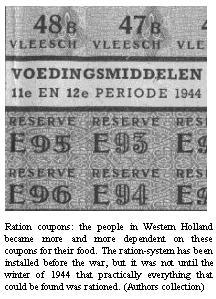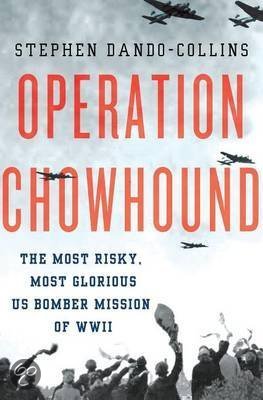The situation in 1945
 The aid from Sweden and Switzerland alone was not enough. The Dutch government realized this even before that aid had started in its full effect. In January Queen Wilhelmina wrote a letter to King George and President Roosevelt.
The aid from Sweden and Switzerland alone was not enough. The Dutch government realized this even before that aid had started in its full effect. In January Queen Wilhelmina wrote a letter to King George and President Roosevelt.
"It is the duty of the Dutch government to ask strongly plead for military action with the aim to drive the Germans out of the Netherlands. She feels that this request is reasonable and necessary and she will be grateful for the assurance that nothing will be left undone to reach this goal. If, which the Dutch government hopes will not happen, immediate military aid will not be possible, than immediate aid in the shape of massive evacuation or in the shape of food supplies, clothing, fuel and medicine is necessary." (Translated from L. De Jong page 1074)
Between February and April 1945 practically all power stations went down. Electricity was only available for the official (German) buildings. Gas had been cut. Telephone was also only available for the emergency installations. Western Holland was now really balancing on the edge of total destruction.
"The people's skin had turned gray from hunger. The number of people that had lost their lives due to the hardships approached the twenty thousand at the end of March. The number of citizens that suffered from the so called hunger decease was ten times that high." (Translated from L. de Jong)
There is no doubt that the food that was dropped in operation Manna and Chowhound was badly needed. Full-scale starvation was about to break out in Western Holland and only quick action could prevent this. In the next chapter we will see what made the mercy missions possible. We'll see how it was possible that allied bombers could fly low over enemy territory without being shot at.

This poster of the city of Leiden declares that special care can only be provided to people who can show a statement of their doctor that they need that care. This is another sign that the food distribution was inadequate to feed the people.
 Author: Hans Onderwater This book by Hans Onderwater is the standard work about the food drop missions over Occupied Holland with a bundle of information, photos and first hand accounts of the hunger winter and the food drop missions.
Author: Hans Onderwater This book by Hans Onderwater is the standard work about the food drop missions over Occupied Holland with a bundle of information, photos and first hand accounts of the hunger winter and the food drop missions.